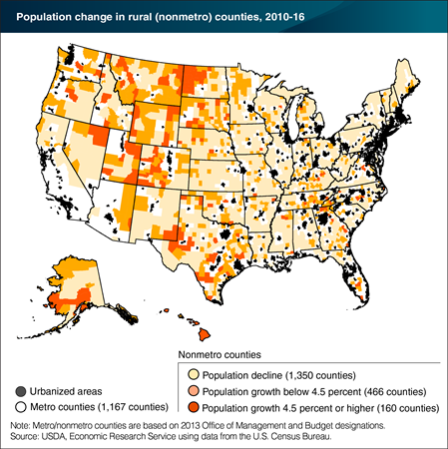According to the USDA's Economic Research Service, the number of people living in rural (nonmetro) counties continues to vary. In July 2016, population stood at 46.1 million, representing 14% of U.S. residents.
Rural county population continued to decline slightly for a 6th straight year in 2015-16, according to the Census Bureau’s latest estimates. Rural population loss has been relatively small — 192,000 fewer people in 2016 compared with 2010, a decline of just 0.4%.
However, this overall trend masks substantial regional and local variation. Population declined by 790,000 people in the 1,350 rural counties that lost population since 2010. Extensive population-loss regions are evident throughout the eastern U.S. On the other hand, 466 rural counties grew at moderate rates (below the national average of 4.5%) and added 245,000 people.
Many of these counties are located in recreation or retirement destinations, such as in the Intermountain West or southern Appalachia. The remaining 160 rural counties that increased at rates above 4.5% added 353,000 people. The highest rates of growth during 2010-16 occurred in rural counties with booming energy sectors, such as those centered in western North Dakota’s Williston Basin.
However, these counties experienced a considerable population slowdown in 2015-16, in line with declines in oil and gas production. This chart appears in the ERS topic page for Population & Migration, updated June 2017.





